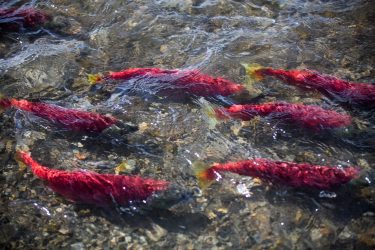
It’s no secret that human activities affect fish, particularly those that must migrate to reproduce. Years of building dams and polluting rivers in some regions have left fish such as salmon struggling to return to their home streams and give birth to the next generation.
A new University of Washington study points to yet another human factor that hampers the ability of fish to reproduce: the timing of our fishing seasons. The paper, appearing online last month in the journal Fish and Fisheries, is one of only a handful of studies that considers how the timing of fishing efforts might disproportionately target certain fish and change the life history patterns of entire populations.
The authors, Michael Tillotson, UW doctoral student in aquatic and fishery sciences, and Tom Quinn, UW professor of aquatic and fishery sciences, build the case for more attention on timing by outlining examples of how fishing seasons have altered a population’s makeup — specifically, its diversity and productivity.
The study was funded by a fellowship from the UW’s IGERT Program on Ocean Change and the ARCS Foundation.
Read more at UW Today »
